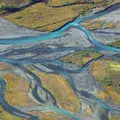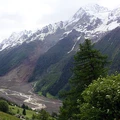
- 6 May 2025
Thanks to the enthusiastic efforts of our members and volunteers, EGU25 was another record breaking year with an incredible 20,984 people participating in the General Assembly, both in Vienna and online!
European Geosciences Union
www.egu.eu
Thanks to the enthusiastic efforts of our members and volunteers, EGU25 was another record breaking year with an incredible 20,984 people participating in the General Assembly, both in Vienna and online!

Giorgia Stasi will be the first ever EGU volunteer to serve as Early Career Scientist Representative and be elected to lead her division, Energy, Resources and Environment, as Division President, whilst still in the Early Career Scientist stage.

EGU stands behind our sibling American scientific societies, providing our support for them and all their members in the face of recent changes to US scientific policy.

The Union restates our support for a geoscience community that is diverse as an essential feature of conducting cutting edge, innovative science research. In order to support this, we share a list of EGU’s tools, resources and policies that our community can use to broaden access to science, both in Europe and around the globe.

Following a vote by EGU’s volunteer Council, the Union will no longer be posting on X, formerly known as Twitter.

It’s pride month and we are delighted to feature a post on queer inclusion in fieldwork written by members of EGU’s pride group. Queer Quarterly is the blog series of the EGU pride group, an LGBTQIA+ team of geoscientists engaged to uphold and improve the rights of the community at EGU. This quarterly post is based on the EGU Webinar Uneven Ground 2 on improving fieldwork accessibility for LGBTQIA+ people. Legal protections for gender and sexual minorities are in flux …

In this week’s blog, Levan Tielidze tells us about his recent glacier study from the Greater Caucasus. By combining geomorphology, remote sensing, and historical cartography, the team reconstructed nearly 200 years of glacier and climate change across one of the world’s most dynamic cryospheric frontiers. Glaciers’ transformation provides a high-resolution archive of post-Little Ice Age climate dynamics in this region where instrumental records are sparse. The Greater Caucasus and the Little Ice Age The majestic Greater Caucasus mountains, a rugged …

In the morning of May 28, 2025, the picturesque Swiss alpine village of Blatten sat quiet and serene in the Lötschen Valley. Exceptionally quiet, in fact, as the village was evacuated on May 19th after a local Natural Hazards expert spotted a worrisome change in a local mountain looming about the village, the Kleines Nesthorn: it was collapsing faster. The Kleines Nesthorn is a 3,341-meter peak with a known instability between rock layers that has caused the mountain to shift …